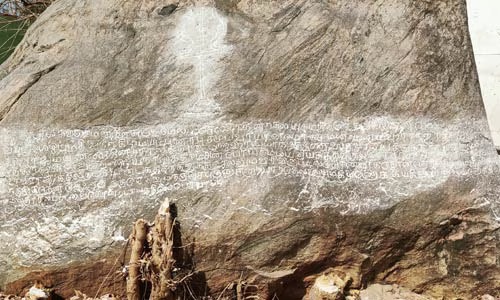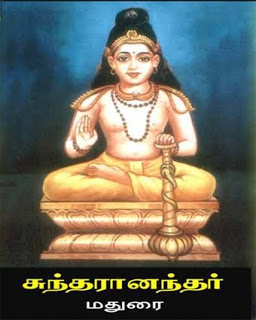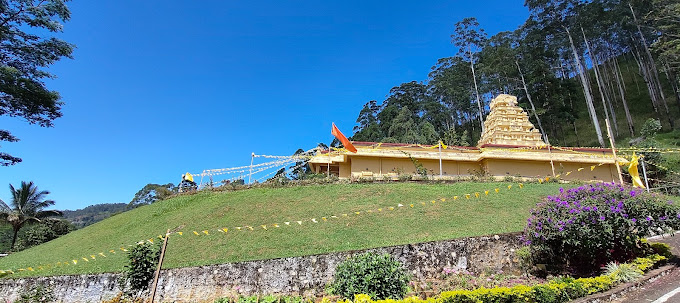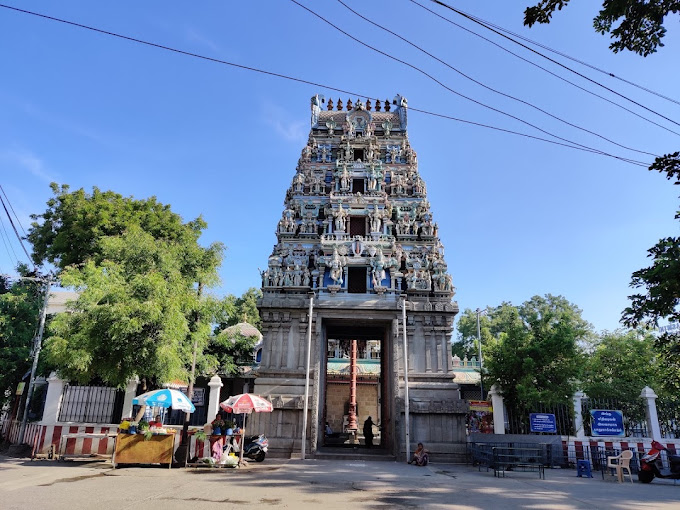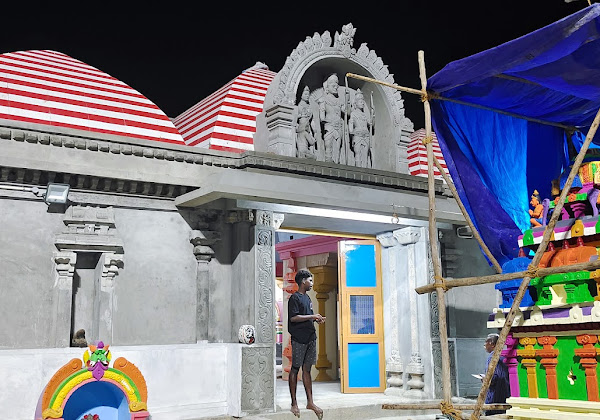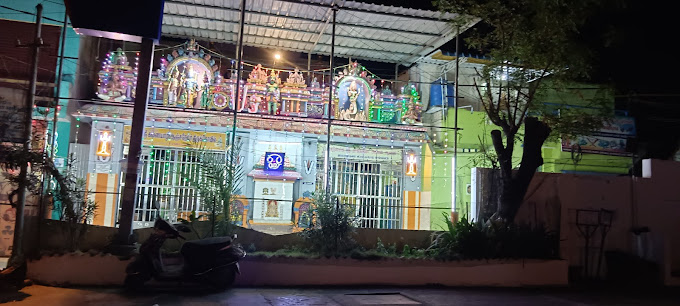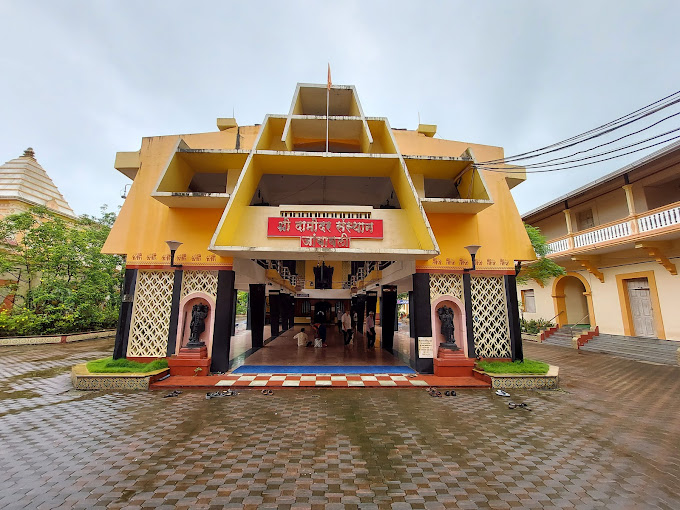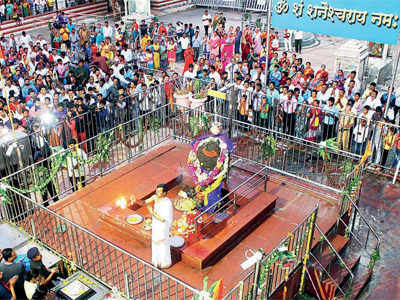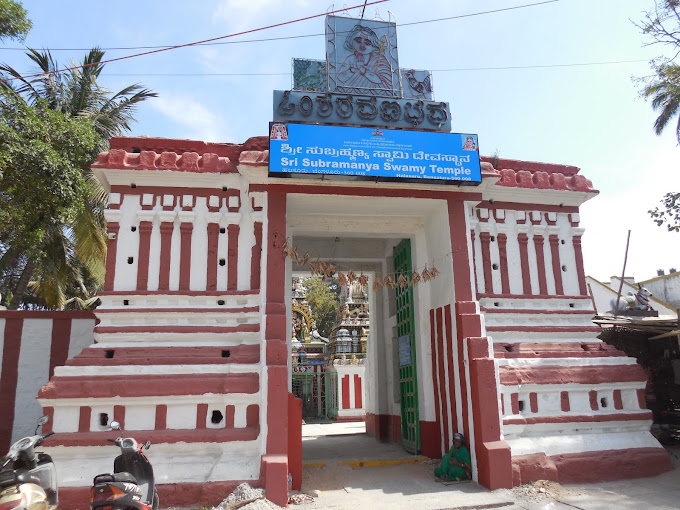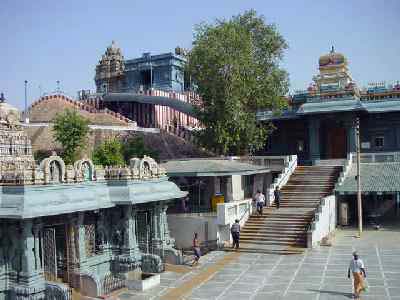Thiruvengadam Sri Venkateswara Swami Vaari Temple( Tirupati)- Andhra Pradesh

Address
Thiruvengadam Sri Venkateswara Swami Vaari Temple- Tirumala Tirupati Devasthanams, TTD Administrative Building, K.T. Road, Tirupati – 517 501, Andhra Pradesh, India.
Diety
Venkateswara Amman: Padmavathi
Introduction
Tirupati is a city in Chittoor district of the Indian state of Andhra Pradesh. The Temple is dedicated to Venkateswara, a form of Vishnu, who is believed to have appeared here to save mankind from trials and troubles of Kali Yuga. Hence the place has also got the name Kaliyuga Vaikuntha and the Lord here is referred to as Kaliyuga Prathyaksha Daivam. The temple is also known by other names like Tirumala Temple, Tirupati Temple, Tirupati Balaji Temple. Venkateswara is known by many other names: Balaji, Govinda, and Srinivasa. The Temple is constructed in Dravidian architecture and is believed to be constructed over a period of time starting from 300 AD. The Garbagruha (Sanctum Sanctorum) is called AnandaNilayam. The presiding deity, Venkateswara, is in standing posture and faces east in Garbha gruha. The temple follows Vaikhanasa Agama tradition of worship. The temple is one of the eight Vishnu Swayambhu Kshetras and is listed as 106th and the last earthly Divya Desam. The Temple premises had two modern Queue complex buildings to organise the pilgrim rush, Tarigonda Vengamamba Annaprasadam complex for free meals to Pilgrims, hair tonsure buildings and a number of pilgrim lodging sites.There are several legends associated with the manifestation of the Lord in Tirumala. According to one legend, the temple has a murti (deity) of Venkateswara, which it is believed shall remain here for the entire duration of the present Kali Yuga. There are several legends associated with the manifestation of the Lord in Tirumala. According to one legend, the temple has a murti (deity) of Venkateswara, which it is believed shall remain here for the entire duration of the present Kali Yuga.
Puranic Significance
During Dvapara Yuga, Adisesha resided on earth as Seshachalam Hills after losing a contest with Vayu. According to Puranas, Tirumala is regarded as Adivaraha Kshetra. After killing Hiranyaksha, Adivaraha resided on this hill. Venkatachala Mahatyam is the widely accepted legend over Tirumala Temple. During Kali Yuga, Narada advised Rishis who were performing Yajna to decide who could be given the fruits of yagna among Trimurtis. Bhrigu was sent to test Trimurtis. The sage who had an extra eye in the sole of his foot visited Brahma and Shiva and went unnoticed in both these locations. At last he visited Vishnu and the lord acts as if he had not noticed Bhrigu. Getting angered by this act, sage Bhrigu kicked Vishnu in the chest, to which Vishnu did not react and instead apologised to the Sage by massaging his feet. During this act, he squashed the extra eye that was present in the sole of Bhrigu’s foot. However Lakshmi finds it as an insult and had left Vaikuntam onto Earth to Kolhapur and started meditating Vishnu bore human form as Srinivasa, left Vaikuntam, in search of Lakshmi, reached Tirumala Hills and started meditating. Lakshmi came to know about the condition of Srinivasa and prayed to Shiva and Brahma. Shiva and Brahma then converted themselves into Cow and Calf and Goddess Lakshmi had handed over the cow and calf to Chola king ruling over Tirumala Hills at that time. The Cow would provide milk to Srinivasa daily while it was taken for grazing. One day Cowherd saw this and tried to beat the Cow with staff but Srinivasa had borne the injury. Getting angered by this Srinivasa had cursed the Chola king to become a Demon as dharma says Servants sin should be borne by Kings. The king prayed for mercy after which Srinivasa said to him, that the King should take next birth as Akasaraja and should perform marriage of his daughter Padmavati with Srinivasa. Srinivasa went to his mother Vakula Devi on Tirumala hills and stayed there for a while. After curse Chola king took rebirth as Akasaraja and he had a daughter named Padmavati who was born in the Padmapushkarini situated at present day Tiruchanur in Andhra Pradesh. Srinivasa married Padmavati at present day Narayanavanam in Andhra Pradesh and will return to Tirumala Hills. After few months Goddess Lakshmi had come to know about the marriage of Srinivasa with Padamavati and went to Tirumala hills to question Srinivasa. It is said that the srinivasa turns into Stone right when he was encountered by Lakshmi and Padmavathi. Brahma and Shiva appear before the confused queens and explain the main purpose behind all this – The Lord’s desire to be on the 7 hills for the emancipation of mankind from the perpetual troubles of Kali Yuga. Goddesses Lakshmi and Padmavathi also turn into stone deities expressing their wish to be with their always. Lakshmi stays with Him on His Chest on the left side while Padmavathi rests on His Chest’s right side.
Special Features
Dwarams and Prakarams There are three Dwarams (entrances) which lead to Garbhagriha from outside. Mahadwaram also known as padikavali is the first entrance which is provided through Mahaprakaram (outer compound wall). A 50 feet, five storied Gopuram (Temple tower) is constructed over this Mahadwaram with seven Kalasams at its apex. Vendivakili (Silver Entrance) also known as Nadimipadikavali is the second entrance and is provided through SampangiPrakaram (Inner compound wall). A three storied Gopuram is constructed over Vendivakili with seven Kalasams at its apex. Bangaruvakili (Golden Entrance) is the third entrance which will lead into Garbhagriha. There are two tall copper images of the Dvarapalakas Jaya-Vijaya on either side of this door. The thick wooden door is covered with gold gilt plates depicting the Dasavathaaram of Vishnu. Pradakshinams Circumambulation around Sanctum sanctorum in the temple or deities is called Pradakshinam. There are two circumbulation paths in the temple. The first one is area between Mahaprakaram and sampangiprakaram. This path known as Sampangipradakshinam has many Mandapas, Dwajasthambam, Balipeetam, Kshetrapalika sila, prasadam distribution area etc. The Vimanapradakhinam is the second pradakshinam, which circumbulates Ananda Nilayam Vimanam. This path has sub-shrines dedicted to Varadaraja and Yoga Narasimha, Potu (main kitchen), Bangaru Bavi (golden well), Ankurarpana Mandapam, Yagasala, Nanala (coins and Notla (Paper notes) Parkamani, Almyrah of Sandal paste (Chandanapu ara), cell of records, Sannidhi Bhashyakarulu, Lords’s hundi and the seat of Vishvaksena. Anandanilayam vimanam and Garbhagriha Garbhagriha is the Sanctum sanctorum where the presiding deity Venkateswara resides along with other small deities. Golden Entrance leads to Garbhagriha. There are two more doors in between Bangaruvakili and Garbhagriha. The deity will be in a standing posture with four hands one in varada posture, one placed over thigh and other two holding Shanka and Sudarshana Chakra. The deity is decorated with precious ornaments. The deity bears Goddess Lakshmi on the right chest and Goddess Padmavathi on the left. Pilgrims are not allowed to enter the Garbhagriha (beyond Kulasekharapadi (path)). Ananda Nilayam Vimanam is the main Gopuram constructed over ‘Garbhagriha. This is a three storied Gopuram and has single Kalasam at its apex. It was covered with gilt copper plates and covered with a golden vase. There are many deities of gods carved over this Gopuram. On this Gopuram, there is a deity of Venkateswara known as “Vimana Venkateswara” which is believed to be exact replica of deity inside Garbhagriha. Other Murtis Along with Pancha berams, the garbha griha also hosts the panchaloha deities of Sita, Rama, Lakshmana, Rukmini, Krishna,[31] Chakratalvar. The temple hosts the deities of Garuda (Vishnu’s vehicle), Narasimha, Varadaraja, Kubera, Hanuman in their respective sub-shrines. The temple also host the deities of Shesha (Vishnu’s serpent), Viswaksena, Sugriva, Ramanuja. Vimana Venkateswara is the exact replica icon of Venkateswara carved on the Ananda Nilayam Viamana’s second tier north west corner.
Festivals
The temple follows “Vaikhanasa Agama” tradition of worshipwhich is believed to be revealed by Sage Vikhanasaand is propagated by his disciples Atri, Bhrigu, Marichi, Kasyapa. The world-famous “Tirupati Laddu” is given at Tirumala Temple as prasadam. More than 50,000 to 100,000 pilgrims have Darshan of presiding deity, Venkateswara, while on special occasions and festivals, like the annual Brahmotsavams, the number of pilgrims visiting the temple shoots up to 500,000, making it the most-visited holy place in the world
Century/Period/Age
1000-2000 years old
Managed By
Tirumala Tirupati Devasthanams
Nearest Bus Station
Tirupati
Nearest Railway Station
Tirupati
Nearest Airport
Tirupati
